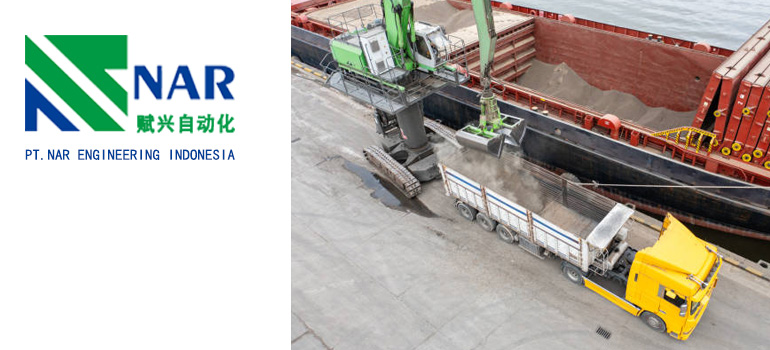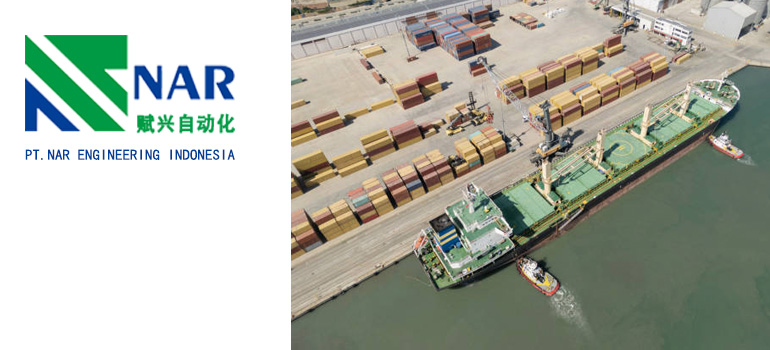Summary:
The Future of Port Loading Systems: Trends and Developments
Understanding Port Loading Systems
Current Trends in Port Loading Systems
Technological Developments Shaping the Future
Economic and Market Trends
Port loading systems are crucial components of maritime logistics, facilitating the efficient movement of goods between land and sea transport modes. These systems play a pivotal role in the global supply chain by ensuring timely loading and unloading of cargo ships, optimizing operational efficiency, and reducing turnaround times at ports.
Understanding Port Loading Systems
Port loading systems encompass a range of equipment and processes designed to handle various types of cargo, including containers, bulk commodities, and general cargo. They involve sophisticated machinery such as cranes, conveyors, and automated handling systems, all coordinated to streamline the transfer of goods from shore facilities onto vessels.
Importance in Maritime Logistics
In the realm of maritime logistics, port loading systems serve as vital nodes connecting land-based transportation networks with global shipping routes. They facilitate the seamless flow of goods, supporting international trade and commerce by ensuring that cargoes are efficiently loaded onto ships for onward delivery to destinations worldwide.
Key Components of Modern Port Loading Systems
Modern port loading system integrate advanced technologies to enhance efficiency, safety, and sustainability. These systems include:
- Automated Handling Equipment: Such as automated stacking cranes and robotic container handlers, which improve loading speeds and reduce labor costs.
- Digitalization and IoT Integration: Utilizing sensors and data analytics to optimize operations, monitor cargo conditions, and predict maintenance needs.
- Environmental Considerations: Implementing eco-friendly practices like energy-efficient equipment and emissions reduction technologies to minimize the ecological footprint of port operations.
Port loading systems are pivotal in shaping the future of global trade, adapting to technological advancements and environmental imperatives to meet the growing demands of modern supply chains.
Current Trends in Port Loading Systems

In recent years, port loading system have undergone significant advancements driven by technology, sustainability initiatives, and safety enhancements. Here are the key trends shaping the landscape of port loading systems today:
Automation and Digitalization
Integration of IoT and AI Technologies
Port operators are increasingly adopting IoT sensors and AI-driven analytics to optimize loading processes. These technologies enable real-time monitoring of cargo, predictive maintenance of equipment, and efficient resource allocation, leading to improved operational efficiency and reduced turnaround times.
Advantages of Automated Loading Processes
Automated handling equipment, such as robotic cranes and automated guided vehicles (AGVs), are revolutionizing port operations. These systems enhance loading speeds, reduce labor costs, and minimize human error, thereby increasing productivity and throughput capacity at ports.
Case Studies of Automated Port Facilities
Ports around the world, including major hubs like Rotterdam and Singapore, have implemented automated loading systems with impressive results. These case studies showcase the benefits of automation in terms of scalability, reliability, and adaptability to changing market demands.
Sustainability Initiatives
Environmental Impact Reduction Strategies
Port authorities and operators are implementing sustainability measures to minimize the environmental footprint of loading operations. This includes the use of eco-friendly fuels for equipment, adoption of electric-powered handling machinery, and implementation of emissions reduction technologies.
Use of Renewable Energy in Port Operations
There is a growing trend towards integrating renewable energy sources, such as solar and wind power, into port operations. Renewable energy not only reduces greenhouse gas emissions but also enhances energy security and resilience of port facilities.
Green Port Initiatives and Regulations
Governments and international organizations are increasingly emphasizing green port initiatives and regulations. These initiatives encourage ports to adopt sustainable practices, improve air and water quality, and mitigate environmental impacts associated with cargo handling activities.
Safety and Security Enhancements
Innovations in Port Security Systems
Advances in technology have led to the development of robust security systems for ports, including CCTV surveillance, access control systems, and cybersecurity measures. These enhancements ensure the safety of personnel, cargo, and infrastructure, while also safeguarding against potential threats and vulnerabilities.
Risk Mitigation Strategies
Port operators are implementing comprehensive risk management frameworks to address operational risks, including those related to cargo handling, equipment failure, and natural disasters. Proactive risk mitigation strategies help maintain operational continuity and ensure compliance with safety standards.
Compliance with International Standards
Adherence to international standards and regulations, such as ISPS Code (International Ship and Port Facility Security Code), is paramount for ports worldwide. Compliance ensures port security, operational transparency, and enhances global trade facilitation efforts.
These current trends underscore the evolution of port loading systems towards greater efficiency, sustainability, and safety. By embracing technological innovations and adopting sustainable practices, ports are poised to meet the challenges and opportunities of modern maritime logistics effectively.
Technological Developments Shaping the Future
Technological advancements are driving significant changes in port loading system, enhancing efficiency, sustainability, and operational capabilities. Here are key developments shaping the future of these systems:
Smart Port Concepts
IoT Applications in Port Operations
IoT (Internet of Things) technology is revolutionizing port operations by enabling real-time monitoring and management of assets, equipment, and cargo. IoT sensors embedded in containers, cranes, and terminals provide valuable data on location, condition, and performance, optimizing logistics and minimizing delays.
Data Analytics for Optimization
Advanced data analytics tools and algorithms analyze vast amounts of operational data collected from IoT devices. This data-driven approach enhances decision-making processes, predicts maintenance needs, and identifies opportunities for operational efficiencies, such as optimizing berth scheduling and cargo handling workflows.
Predictive Maintenance Systems
Predictive maintenance techniques leverage machine learning and AI to forecast equipment failures before they occur. By monitoring the health and performance of critical assets in real-time, port operators can schedule maintenance proactively, minimize downtime, and extend the lifespan of equipment.
Advances in Equipment and Infrastructure
Next-Generation Cranes and Handling Systems
Technological innovations in crane design and automation are enhancing loading and unloading capabilities at ports. Automated stacking cranes, gantry cranes with AI-assisted control systems, and robotic container handlers improve efficiency, reduce labor costs, and increase throughput capacity.
Container Tracking and Management Solutions
RFID (Radio Frequency Identification) and GPS (Global Positioning System) technologies enable precise tracking and management of containers throughout the supply chain. Integrated container tracking systems provide real-time visibility, improve inventory management, and optimize logistics operations from port to destination.
Innovations in Loading and Unloading Processes
Continuous improvements in loading and unloading processes include faster turnaround times, optimized cargo handling workflows, and streamlined terminal operations. Innovations such as automated conveyor systems, semi-automated bulk handling equipment, and modular loading facilities cater to diverse cargo types and increase operational flexibility.
These technological developments are transforming port loading system into smart, interconnected hubs of global trade. By embracing digitalization, automation, and predictive analytics, ports are poised to enhance efficiency, sustainability, and competitiveness in the rapidly evolving maritime logistics landscape.
Economic and Market Trends
The dynamics of global trade and economic conditions play a crucial role in shaping the landscape of port loading systems. Here are the key trends impacting these systems:
Impact of Trade Agreements on Port Operations
Global Trade Patterns
Shifts in global trade patterns, influenced by trade agreements and geopolitical factors, impact the volume and composition of cargo handled by ports. Trade agreements like the USMCA (United States-Mexico-Canada Agreement) and CPTPP (Comprehensive and Progressive Agreement for Trans-Pacific Partnership) reshape regional trade flows and stimulate demand for efficient port infrastructure.
Trade Volumes and Growth Projections
Economic growth in emerging markets and recovery in developed economies drive fluctuations in trade volumes handled by ports. Forecasts indicate steady growth in containerized cargo traffic, particularly in Asia-Pacific and North America, necessitating investments in port capacity expansion and modernization.
Emerging Markets and Growth Opportunities
Expansion of Port Infrastructure
Emerging markets, such as Southeast Asia, Latin America, and Africa, present significant growth opportunities for port operators and logistics providers. Investments in new terminals, deep-water ports, and intermodal facilities support regional economic development and facilitate global trade connectivity.
Integration with Supply Chain Networks
Ports are increasingly integrated into global supply chain networks, serving as critical nodes for seamless cargo movement between production centers and consumer markets. Strategic partnerships and alliances among port operators, shipping lines, and logistics providers enhance operational efficiency and service reliability.
Challenges and Opportunities in Container Shipping
Technological Disruptions
Technological disruptions, including digitalization and automation, revolutionize container shipping and port operations. Innovations such as blockchain for supply chain transparency and autonomous vessels for maritime transport present opportunities to streamline processes and reduce logistics costs.
Environmental and Regulatory Compliance
Stringent environmental regulations and sustainability goals drive investments in eco-friendly port infrastructure and cleaner maritime technologies. Ports adopt green initiatives, such as shore power facilities and emissions reduction measures, to mitigate environmental impact and comply with regulatory requirements.
Digital Transformation and Market Competition
Adoption of Digital Technologies
The digital transformation of port operations, encompassing IoT, AI, and big data analytics, enhances operational efficiency and customer service. Port authorities leverage digital platforms for real-time cargo tracking, predictive maintenance, and efficient resource allocation, gaining a competitive edge in the market.
Market Consolidation and Strategic Alliances
Consolidation among port operators and shipping alliances reshape market dynamics, influencing port pricing strategies and service offerings. Strategic alliances enhance network coverage and service reliability, enabling ports to attract major shipping lines and maintain competitive advantage.
These economic and market trends underscore the dynamic nature of port loading system, driving innovation, investments, and strategic partnerships to meet evolving demands in global trade and logistics. By navigating these trends effectively, ports can capitalize on growth opportunities and sustain long-term competitiveness in the maritime industry.

